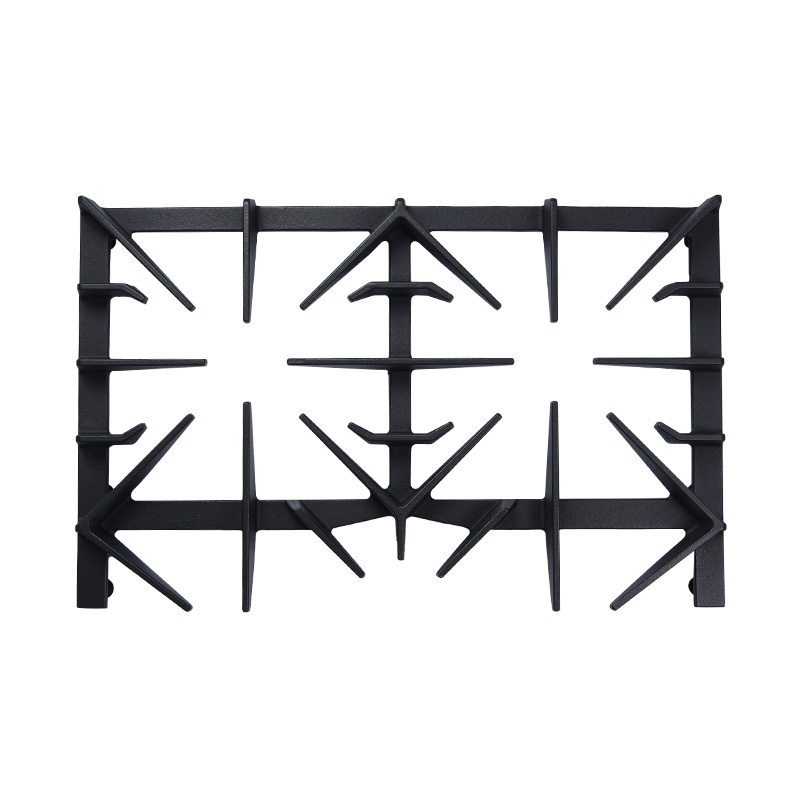Material Choice: Gas stove supports are typically manufactured from materials that possess high thermal resistance. Cast iron, stainless steel, and certain high-temperature enamel-coated metals are commonly used. Cast iron provides excellent heat retention and durability but can be prone to rust if not properly coated. Stainless steel offers superior resistance to corrosion and high temperatures, making it ideal for high-heat applications. Enamel coatings on metal supports offer an additional layer of protection against heat and corrosion while maintaining aesthetic appeal.
Heat Distribution: Effective heat distribution is crucial for preventing localized overheating, which can cause warping or deformation of the support. Well-engineered stove supports incorporate design features that promote even heat distribution across the support surface. This is often achieved through the use of materials with consistent thermal conductivity and designs that allow for balanced heat transfer. This uniform distribution helps maintain the integrity of the support under continuous high-temperature conditions.
Thermal Expansion: Materials used in stove supports are selected based on their low thermal expansion properties. Thermal expansion refers to the tendency of materials to expand when heated and contract when cooled. Supports made from high-grade metals and alloys are engineered to minimize these effects. Design considerations often include material thickness and reinforcement to counteract potential warping or deformation due to thermal stress. This ensures the support maintains its shape and function even under repeated thermal cycles.
Reinforced Design: To withstand the stresses of high temperatures and heavy cookware, many gas stove supports feature reinforced or ribbed designs. Reinforcement elements, such as crossbars or additional struts, enhance the structural integrity of the support. This reinforcement helps distribute the weight of cookware more evenly and provides additional resistance to thermal and mechanical stresses. Such designs are particularly important in commercial kitchens where heavy pots and continuous high heat are common.
Coatings and Treatments: Stove supports often undergo coatings or treatments to improve their ability to handle thermal stress. Heat-resistant coatings, such as ceramic or enamel, provide a protective layer that shields the underlying material from direct exposure to high temperatures. These coatings can also prevent oxidation, rust, and corrosion, extending the life of the support. Some treatments enhance the support's non-stick properties, making it easier to clean and maintain.
Ventilation and Airflow: Proper ventilation and airflow around the stove support are essential for managing heat. Supports are designed with considerations for air circulation, which helps dissipate heat more effectively. Adequate spacing and design features that facilitate airflow can prevent heat buildup and reduce the risk of overheating. This is particularly important in preventing the accumulation of excessive heat around the support, which can lead to thermal stress and potential damage.
Regular Maintenance: Regular maintenance is key to ensuring the longevity and performance of gas stove supports. This includes routine inspections for signs of wear, corrosion, or heat damage. Maintenance procedures may involve cleaning the support to remove residues that could contribute to overheating, checking for signs of structural deformation, and replacing any damaged components. Proper maintenance practices help preserve the support's ability to handle high temperatures and maintain its overall functionality.
Weight Capacity: The design of gas stove supports takes into account the weight of cookware and its distribution. Supports are engineered to accommodate specific weight capacities without compromising stability or performance. Ensuring that the support can handle the maximum load, especially under high-heat conditions, is critical to preventing deformation or failure.
Cast Iron Gas Stove Pan Support Stand
